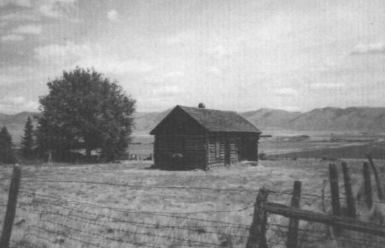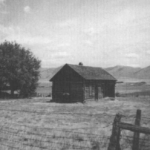Blog
Topic Pages: Deification
June 12, 2021
2006: Kirk D. Hagen: “Eternal Progression in a Multiverse: An Explorative Mormon Cosmology,” Dialogue 38.1 (Summer 2005): 1– 45.
This article is an examination of the Mormon doctrine of eternal progression within the context of big-bang cosmology, a description of a finite universe that appears to contradict that doctrine. I argue that a multiverse cosmology, a theory that posits a multiplicity of universes, resolves many of the problems posed by big-bang cosmology.
2005: Jeremy Grimshaw: “Music of a “More Exalted Sphere”: The Sonic Cosmology of La Monte Young,” Dialogue 38.1 (Spring 2005): 1– 35.
“Seven and half blocks east and five blocks south of the Salt Lake Temple, the 0,0 of the city’s cardinally aligned grid, an inconspicuous gate on the north side of the street opens onto a long path that leads to what was once the backyard of Thomas B. Child. A stonemason by trade and Mormon bishop by calling, Child spent many of his spare moments between 1945 and 1963 designing surreal and sacred sculptures and engraving poignant aphorisms into stone tablets, gradually creating one of the most unique (and, even to most Mormons, unknown) collections of folk art in the United States.”
2002: Eugene England, “The Weeping God of Mormonism,” Dialogue 35.1 (Spring 2002): 63 – 80.
Enoch is able to focus his surprise at God’s unexpected emotion intoquestions which disclose, even after his previous visions and hisachievements as a prophet, what is for him an entirely new understand-ing of the nature of God. The answers to Enoch’s questions reveal a con-cept of God which, I believe, is the essential foundation of all Mormontheology, one that makes our theology radically different from most others.
1989: Gay Taylor, “If I Were God,” Dialogue 22.1 (Spring 1989): 106 – 113.
“I often muse what I would do if I were God. Would I first stop wars, eliminate hunger and disease, make people loving and caring? I think not. Though the prospect is appealing, I know that we are here to work out problems. If we had no walls to climb, no boulders to move, we might as well have stayed in heaven and be done with it. I would consider, instead, some of the things that God is alleged to have done or commanded us to do. Which would I approve of, and which would I not — if I were God?”
1970: O. Kendall White, Jr., “The Transformation of Mormon Theology,” Dialogue 5.2 (Summer 1970): 9 – 24.
For most Mormons tend to think of their theology as a relatively constant, unchanging set of doctrines and beliefs, influenced little by social environment.
1966: Truman Madsen, “Joseph Smith and the Sources of Love,” Dialogue 1.1 (Spring 1966): 122 – 134.
One can have the forms without the power but not the power without the forms. Of course ritual may be “empty.” But so it may be full, full of godly power.


 Back to all blog articles
Back to all blog articles


